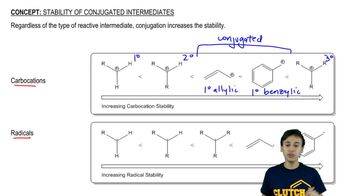Show how you would accomplish the following synthetic transformations. Show all intermediates.
b. 2,2-dibromobutane → but-2-yne
 Verified step by step guidance
Verified step by step guidance Verified video answer for a similar problem:
Verified video answer for a similar problem:



 2:20m
2:20mMaster General features of double dehydrohalogenation. with a bite sized video explanation from Johnny
Start learning